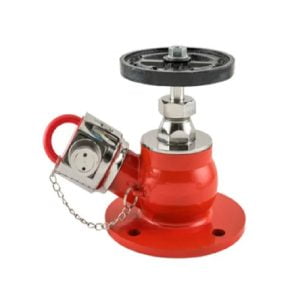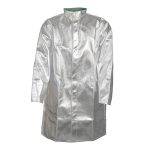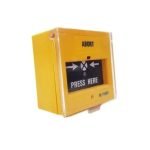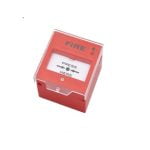Your list is empty, add products to the list to send a request
What is a Conventional Fire Alarm Panel?

13
Mar
Firesupplies, established as the first online store for fire product supplies by South Fire Systems PVT LTD, is dedicated to providing the building and human safety community with the highest quality fire products in India. Our success stems from our commitment to offering reliable life safety products, including fire alarm and gas detection systems, emergency lighting, and firefighting and safety gear—all at competitive prices.
One of the essential components of a comprehensive fire safety system is the conventional fire alarm panel. This blog explores what a conventional fire alarm panel is, how it works, its advantages and limitations, and why it is critical for building safety.
What is a Conventional Fire Alarm Panel?
A conventional fire alarm panel is a type of fire detection system that monitors fire zones and alerts building occupants in the event of a fire. Unlike addressable fire alarm panels that identify the exact location of a fire, conventional panels provide zone-based information.
How a Conventional Fire Alarm Panel Works
- Zone-Based Wiring:
- Conventional fire alarm panels are connected to fire detectors and call points through separate circuits (zones).
- Each zone represents a physical area in the building, such as a floor or a section.
- Detection and Notification:
- When a detector or call point is triggered, the panel receives the signal and activates the alarms for the affected zone.
- The panel does not pinpoint the exact device that triggered the alarm but identifies the zone where the activation occurred.
- Manual and Automatic Activation:
- The system can be triggered manually through call points or automatically through smoke and heat detectors.
Components of a Conventional Fire Alarm System
A conventional fire alarm panel includes several key components that work together to ensure fire safety:
1. Control Panel
- The heart of the system that receives signals from detectors and activates alarms.
- Displays information about the triggered zone.
2. Smoke Detectors
- Detect smoke particles in the air and send a signal to the control panel.
- Includes ionization and photoelectric detectors.
3. Heat Detectors
- Detect rapid increases in temperature or high heat levels.
- Used in areas where smoke detectors might give false alarms, such as kitchens.
4. Manual Call Points (MCP)
- Wall-mounted units that allow individuals to manually trigger the alarm.
- Used in case of visible fire or emergency.
5. Sounders and Strobes
- Audible and visual alerts that signal building occupants to evacuate.
- Ensures alerts are accessible to individuals with hearing or vision impairments.
Advantages of Conventional Fire Alarm Panels
Conventional fire alarm panels remain a popular choice for many types of buildings due to several advantages:
1. Cost-Effective:
- More affordable than addressable systems, making them ideal for small to medium-sized buildings.
2. Simple Installation and Maintenance:
- Straightforward wiring and setup.
- Easier to maintain with minimal technical knowledge required.
3. Reliable Performance:
- Proven track record of reliable operation in detecting fires and alerting occupants.
Limitations of Conventional Fire Alarm Panels
While conventional fire alarm panels offer significant benefits, they also have some limitations:
1. Limited Zone Capacity:
- Conventional panels can only handle a limited number of zones, making them unsuitable for large or complex buildings.
2. No Device-Level Identification:
- The system identifies the zone where the alarm was triggered but not the exact device, making it harder to locate the fire source quickly.
Where are Conventional Fire Alarm Panels Used?
Conventional fire alarm panels are widely used in:
- Small and Medium Commercial Buildings – Offices, shops, and warehouses.
- Residential Buildings – Apartments and housing complexes.
- Schools and Hospitals – Provides an affordable solution for smaller educational and medical facilities.
Key Differences Between Conventional and Addressable Fire Alarm Panels
| Feature | Conventional Fire Alarm Panel | Addressable Fire Alarm Panel |
| Cost | Lower | Higher |
| Installation Complexity | Simple | Complex |
| Device Identification | Zone-level | Exact device location |
| Ideal Use Case | Small to medium buildings | Large or complex buildings |
| Maintenance | Easier and less technical | More technical expertise required |
How to Choose the Right Fire Alarm Panel
When selecting a fire alarm panel for your building, consider the following factors:
- Building Size and Layout – Conventional panels work best for small to medium-sized buildings with simple layouts.
- Budget – Conventional panels are more affordable but may have limited features compared to addressable systems.
- Future Expansion – If the building may expand or change in the future, an addressable system might be a better long-term investment.
- Regulatory Requirements – Ensure the chosen system complies with local fire safety regulations and building codes.
Installation and Maintenance Tips
1. Follow Manufacturer Guidelines: Ensure the system is installed according to the manufacturer’s instructions.
2. Regular Testing: Conduct monthly tests to ensure the system is functioning correctly.
3. Professional Servicing: Schedule professional maintenance at least once a year.
4. Staff Training: Train building occupants on how to respond to fire alarms and use manual call points.
FAQs About Conventional Fire Alarm Panels
1. How many zones can a conventional fire alarm panel support?
A: Most conventional fire alarm panels support between 2 to 32 zones. For larger buildings, an addressable system is recommended to cover more zones.
2. What is the lifespan of a conventional fire alarm panel?
A: A conventional fire alarm panel typically lasts between 10 to 15 years, depending on maintenance and environmental conditions. Regular servicing can extend its lifespan.
3. Can conventional fire alarm panels be connected to modern monitoring systems?
A: Yes, some modern conventional panels can be integrated with remote monitoring systems or connected to a central monitoring station using relay outputs.
Conclusion
Conventional fire alarm panels are an essential component of any fire safety strategy, especially for small to medium-sized buildings. They offer a reliable, cost-effective solution for early fire detection and occupant alerting. While they lack the detailed device-level identification of addressable systems, their simplicity and affordability make them a preferred choice for many businesses and residential properties.
At Firesupplies, we offer a wide range of high-quality conventional fire alarm panels and fire safety products. Whether you need expert advice or a custom fire safety solution, our team is ready to help.
Contact Firesupplies today to find the best fire alarm system for your building and ensure maximum protection against fire emergencies.


























